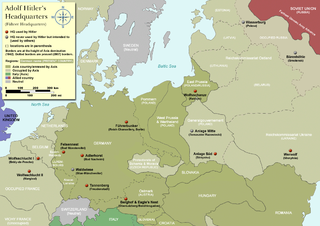 W
WThe Führer Headquarters, abbreviated FHQ, were a number of official headquarters used by the Nazi leader Adolf Hitler and various other German commanders and officials throughout Europe during the Second World War. The last one used, the Führerbunker in Berlin, where Hitler committed suicide on 30 April 1945, is the most widely known headquarters. Other notable headquarters are the Wolfsschanze in East Prussia, where Claus von Stauffenberg in league with other conspirators attempted to assassinate Hitler on 20 July 1944, and Hitler's private home, the Berghof, at Obersalzberg near Berchtesgaden, where he frequently met with prominent foreign and domestic officials.
 W
WAdlerhorst was a World War II bunker complex in Germany, located near Hohenahr in the district of Lahn-Dill-Kreis in the Taunus mountains in the state of Hesse.
 W
WThe Berghof was Adolf Hitler's vacation home in the Obersalzberg of the Bavarian Alps near Berchtesgaden, Bavaria, Germany. Other than the Wolfsschanze, his headquarters in East Prussia for the invasion of the Soviet Union, he spent more time here than anywhere else during his time as the Führer of the Third Reich. It was also one of the most widely known of his headquarters, which were located throughout Europe.
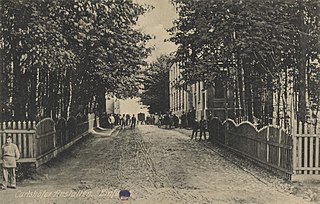 W
WThe Carlshof Institutions was a diaconal hospital in Carlshof, East Prussia. Founded in 1882, it was located about 3 km (1.9 mi) east of the town center of Rastenburg (Kętrzyn). Carlshof housed up to 1,500 inmates from all over East Prussia and specialized in treating patients suffering from epilepsy and intellectual disability; it also cared for alcoholics, elderly, and juveniles as well as homeless persons. In World War II, Carlshof served as a military hospital and barracks for Hitler's nearby headquarters at the Wolf's Lair.
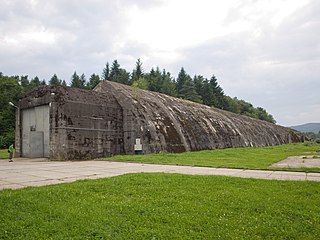 W
WAnlage Süd was a pair of railway headquarters built for Adolf Hitler in the Nazi-occupied part of southern Poland during the Second World War. Two reinforced tunnels were built near the rail line between Rzeszów and Jasło. The first massive train bunker was located in the village of Stępina, and the other was in the town of Strzyżów. They were initially used for a two-day meeting between Hitler and Italian fascist leader Benito Mussolini, on 27–28 August 1941.
 W
WAt the start of the Western European campaign of 1940, the Felsennest was the codename for one of Hitler's Führer Headquarters near Bad Münstereifel, Germany. It was much more cramped than Adolf Hitler's other field bunkers, having only four rooms. Hitler was at the Felsennest in the autumn of 1939, because there were plans to invade France and the Low Countries. He was there again on May 10, 1940 when the invasion took place.
 W
WFührerhauptquartier Wolfsschlucht I was the codename for one of Adolf Hitler's military headquarters, located in a farmhouse of the Belgian village of Brûly-de-Pesche, in the municipality of Couvin, close to the French border. It was occupied by Hitler between 6–24 June 1940 while awaiting the conclusion of the Battle of France.
 W
WFührerhauptquartier Wolfsschlucht II or W2 was the codename used for one of Adolf Hitler's World War II Western Front military headquarters located in Margival, 10 km northeast of Soissons in the department of Aisne in France. It was one of many Führer Headquarters throughout Europe but was used only once by Adolf Hitler, June 16 and 17, 1944 for a meeting with Field Marshals Erwin Rommel and Gerd von Rundstedt about the Normandy Front.
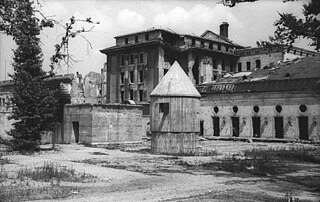 W
WThe Führerbunker was an air raid shelter located near the Reich Chancellery in Berlin, Germany. It was part of a subterranean bunker complex constructed in two phases in 1936 and 1944. It was the last of the Führer Headquarters (Führerhauptquartiere) used by Adolf Hitler during World War II.
 W
WThe Führerhauptquartier Wasserburg, also known simply as "Wasserburg", was a bunker facility built by the Organization Todt as a front-line Führer Headquarters for Adolf Hitler during the Second World War about four kilometers north-west of Pleskau in the Soviet Union, on a loop of the Welikaja River.
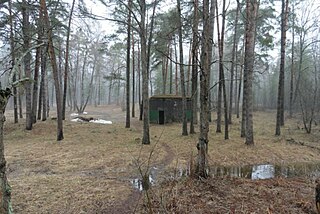 W
WThe Führerhauptquartier Bärenhöhle was a bunker facility built by the German organization Todt, which was built during the Second World War near Smolensk in the Soviet Union.
 W
WFührerhauptquartier Tannenberg was a Führer Headquarters built in 1939 for use as a military command and control facility by Adolf Hitler. It was located near Freudenstadt and Hitler stayed there for a week in 1940 while inspecting the fortresses that formed the Maginot Line.
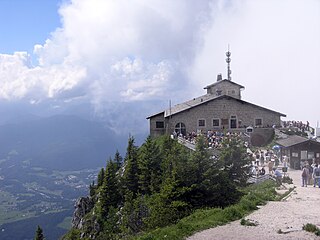 W
WThe Kehlsteinhaus is a Third Reich–era building erected atop the summit of the Kehlstein, a rocky outcrop that rises above Obersalzberg near the town of Berchtesgaden. It was used exclusively by members of the Nazi Party for government and social meetings. It was visited on 14 documented instances by Adolf Hitler, who disliked the location due to his fear of heights, the risk of bad weather, and the thin mountain air. Today it is open seasonally as a restaurant, beer garden, and tourist site.
 W
WThe Reich Chancellery was the traditional name of the office of the Chancellor of Germany in the period of the German Reich from 1878 to 1945. The Chancellery's seat, selected and prepared since 1875, was the former city palace of Prince Antoni Radziwiłł (1775–1833) on Wilhelmstraße in Berlin. Both the palace and a new Reich Chancellery building were seriously damaged during World War II and subsequently demolished.
 W
WThe teahouse on the Mooslahnerkopf hill was the favourite destination of Adolf Hitler when he was at his Berghof at Obersalzberg.
 W
WThe Vorbunker was an underground concrete structure originally intended to be a temporary air-raid shelter for Adolf Hitler and his guards and servants. It was located behind the large reception hall that was added onto the old Reich Chancellery, in Berlin, Germany, in 1936. The bunker was officially called the "Reich Chancellery Air-Raid Shelter" until 1943, when the complex was expanded with the addition of the Führerbunker, located one level below. On 16 January 1945, Hitler moved into the Führerbunker. He was joined by his senior staff, including Martin Bormann. Later, Eva Braun and Joseph Goebbels moved into the Führerbunker while Magda Goebbels and their six children took residence in the upper Vorbunker. The Goebbels family lived in the Vorbunker until their deaths on 1 May 1945.
 W
WFührerhauptquartier Werwolf was the codename used for one of Adolf Hitler's World War II Eastern Front military headquarters located in a pine forest about 12 kilometres north of Vinnytsia, in Ukraine, which was used between 1942 and 1943. It was one of a number of Führer Headquarters throughout Europe, and the most easterly ever used by Hitler in person.
 W
WThe Wolf's Lair served as Adolf Hitler's first Eastern Front military headquarters in World War II. The Organisation Todt constructed the complex, which became one of several Führerhauptquartiere in various parts of Central and Eastern Europe, for the start of Operation Barbarossa—the invasion of the Soviet Union—in 1941.